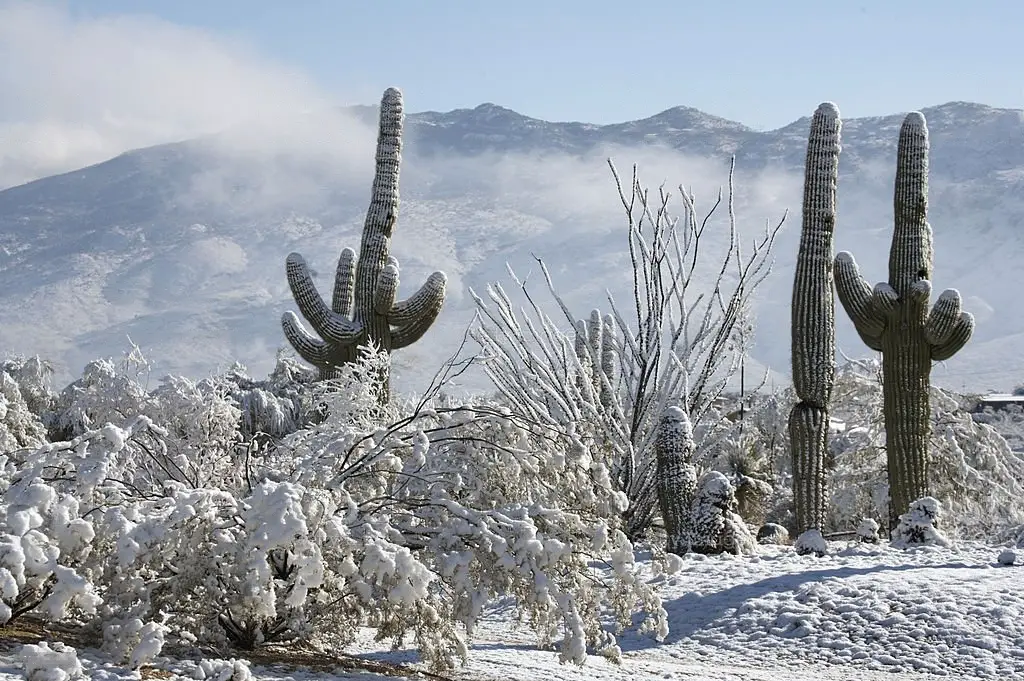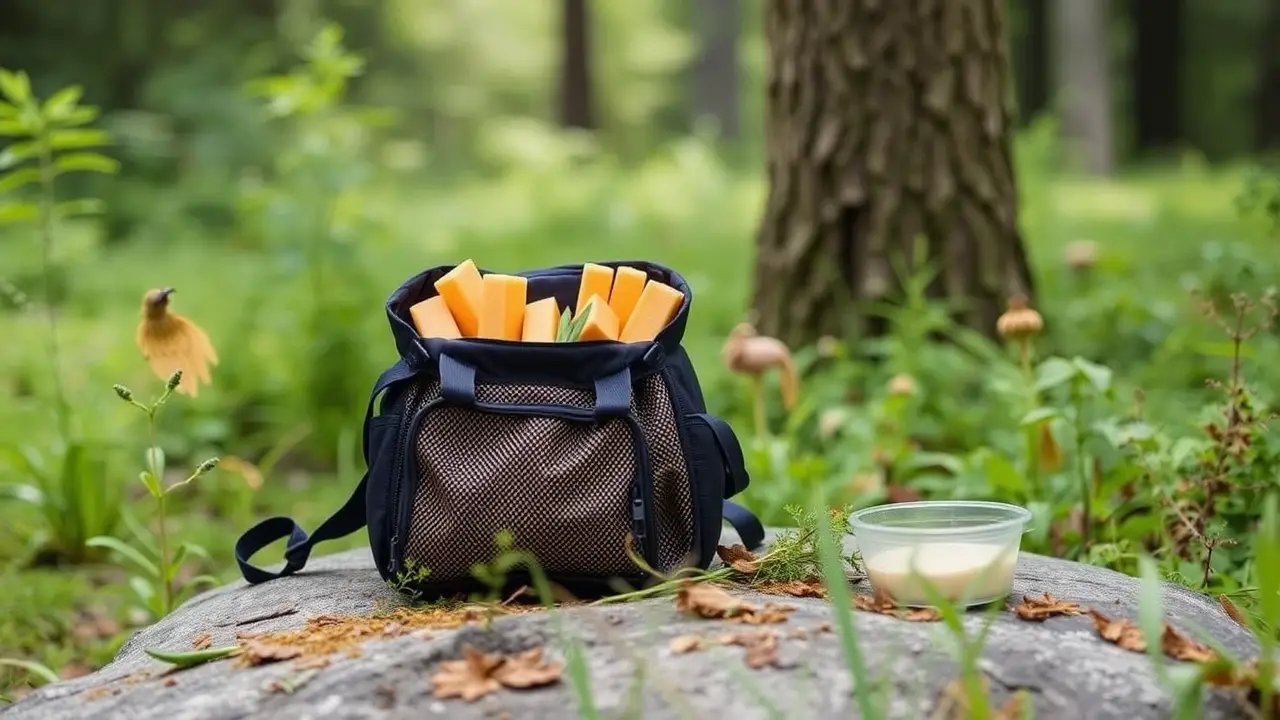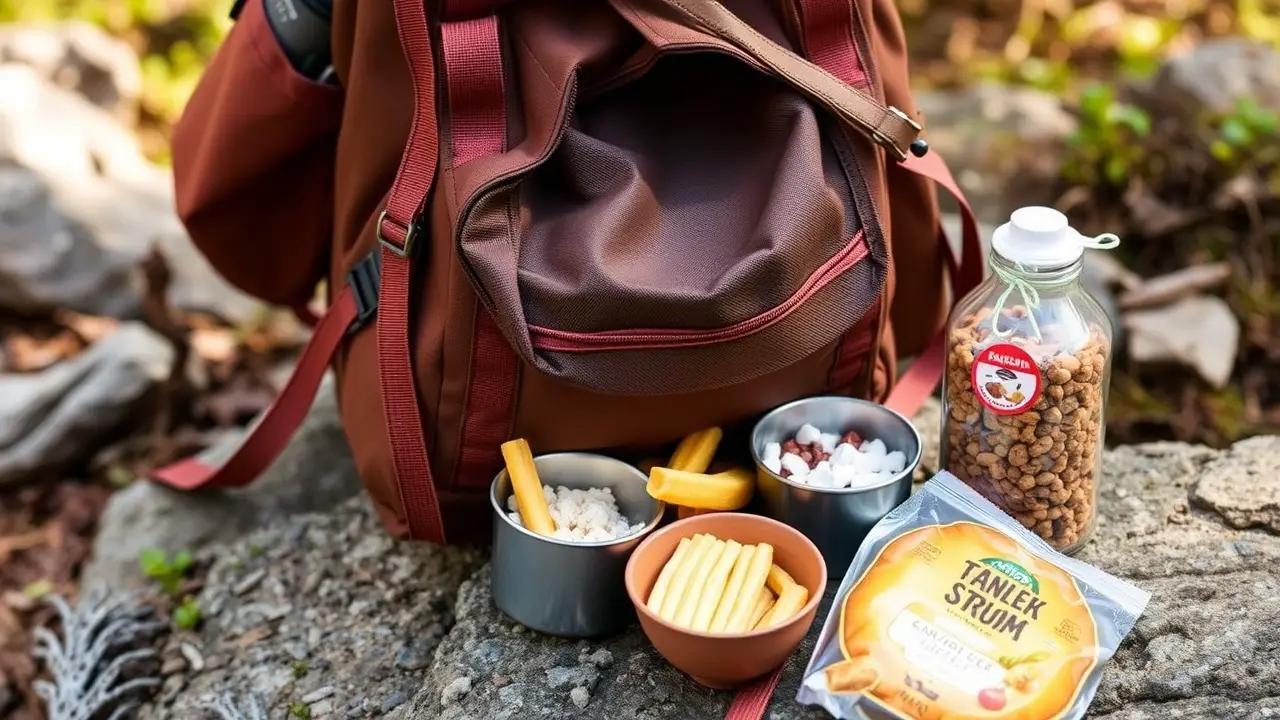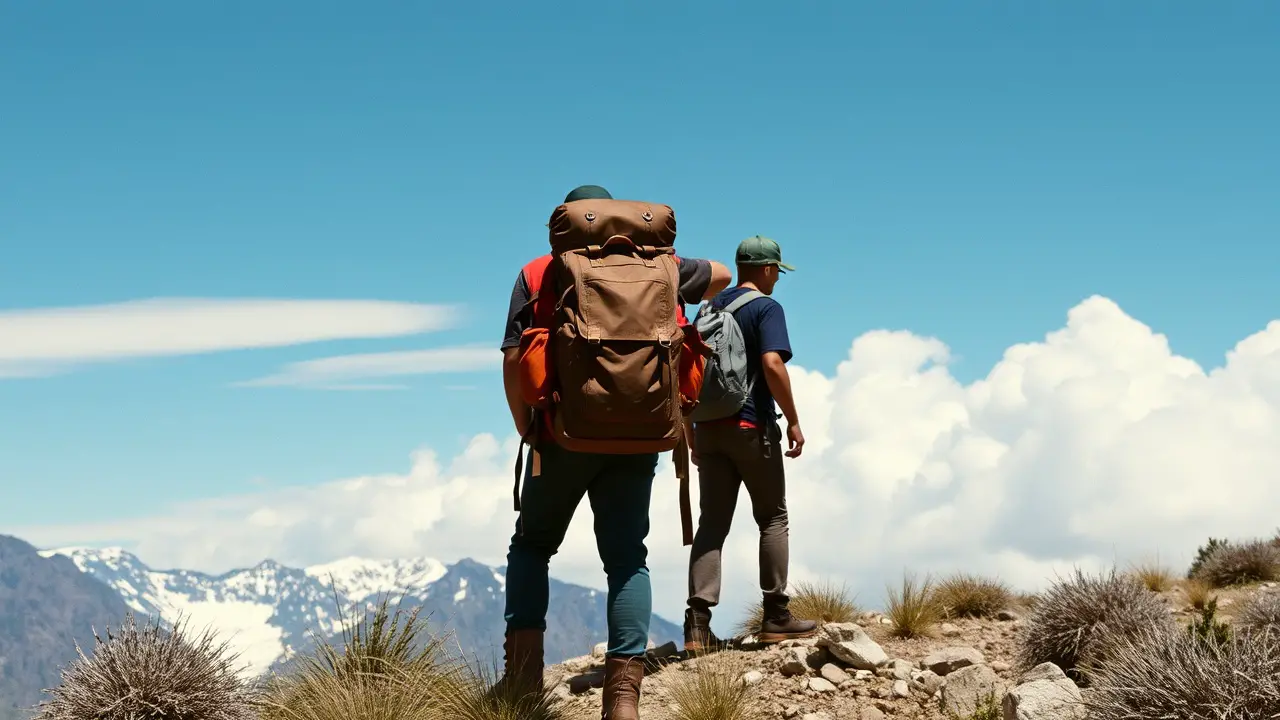Does it snow in Mexico? If you’re planning a trip to Mexico, you might be wondering if it snows there. The truth is that it does snow for sure. The climate in Mexico can vary dramatically from place to place and seasonally.
In some places, it’s possible that you’ll see snow fall every winter, but other parts of the country might not see any precipitation at all during those months.
Still, we do know that Mexico experiences its share of rainfall throughout the year (even though much of it falls during the summer).
If there’s enough moisture in the air when temperatures drop below freezing on high mountains or near bodies of water (like lakes and oceans), then yes:
There could be snowfall in some parts of the country at certain times during the year—especially if those areas are at higher elevations than most other regions nearby!
Does it snow in Mexico?
The answer is yes. It does snow in Mexico. However, it is a rare occurrence. In fact, it has only snowed in Mexico City on three occasions over the last century (1919, 1928, and 1987).
The last time it snowed in Mexico was on January 31, 2016, when temperatures dropped to -1C (30F) at an altitude of 2200 meters above sea level.
If you want to see snow in Mexico, then you should visit the high-altitude regions of the Sierra Madre Oriental mountain range between Chihuahua and Durango states.
This region is home to several ski resorts, including La Parrilla and Sierra de la Laguna, which are popular with tourists who want to experience the thrill of skiing in winter.
In fact, Sierra de la Laguna is one of the highest ski resorts in North America, at an altitude of 2350 meters above sea level!
The Sierra Madre Oriental mountain range has the highest elevations and is the most likely place for snow in Mexico.
The highest elevations of this mountain range are over 12,000 feet (3,660 meters) above sea level. Snowfall occurs there in the winter months, but it is usually light and melts quickly.
The state of Chihuahua also gets some snow each year, but it usually only lasts a few days or less. In 2009, Chihuahua received over 20 inches (51 cm) of snow in one day!
Read more articles: Can You Take Eggs Backpacking?
Map of Mexico
Points to keep in mind
- Does it snow in Mexico?
- When does it snow in Mexico?
- Mexican climate
- Where does it snow in Mexico?
- 1. Mexiquillo, Durango
- 2. Sombrerete, Zacatecas
- 3. Arteaga, Coahuila
- 4. Copper Canyon
- 5. Nevado de Toluca
- 6. New Mexico
- 7. Baja California
- 8. Chihuahua
- 9. Nuevo Leon
- 10. San Luis Potosi
Does it snow in Mexico?
There is a common misconception that it snows in Mexico. In fact, it rarely does. The only place where snowfall is regular is in the mountains of Chihuahua, Durango, and Sinaloa (all located in the northeast or southeast of the country).
There are also a few other places where it snows occasionally: Los Cabos (in Baja California Sur) and Popocatépetl (near Puebla).
These places are near the border with the United States, and their climate can be affected by air masses coming from Canada or Alaska.
Mexico has two seasons: summer (May to September) and winter (November to April). The climate varies depending on your location, but it is generally hot during the day and cool at night.
In most parts of Mexico, temperatures are milder in April and May (the beginning of summer) than in August or September (the end of the season).
The best time to visit Mexico is from October to March, when temperatures are milder and there are fewer tourists. This is also the “low season” in most places, so prices will be lower than during the high season (April to September).
Read more articles: How to Pack Eggs for Backpacking?
When does it snow in Mexico?
For the majority of Mexicans, winter is a time for travel. Many make their way north to the United States or Canada, where there’s snow and ice. But before you start packing your bags, know that Mexico does get snow!
The southernmost tip of Baja California does experience some precipitation during this season—though not enough to be considered “wintry” weather.
The most snowfall occurs in the Sierra Madre Mountains, where there are ski resorts and snowfall can reach up to six feet! It’s also common for the north of Mexico to experience a light dusting of snow.
The best time to visit Mexico is during the spring and fall, when temperatures are mild and dry. The summer months can get pretty hot, with temperatures reaching over 100 degrees Fahrenheit (37.7 degrees Celsius) in some areas.
Mexican climate
The Mexican climate is a dry, temperate one. The average temperature is 20 °C (68 °F). The average rainfall is 200 mm per year.
The most rain falls in July and August, while the least amount of rain falls in February and March. The average humidity is 60%, which means that there’s often a lot of dryness in the air. On average, wind speed averages 5 knots or 6 mph.
The most common wind directions are from the south or southwest. The climate in Mexico is perfect for a wide range of plants and animals. There are more than 3,000 different species of plants that grow there.
These include cacti, agave plants, and prickly pear. The climate is also good for many types of animals, such as iguanas, snakes, and lizards. There are also many birds that live in Mexico.
Read more articles: How to Backpack with Eggs?
Where does it snow in Mexico?
The climate of Mexico is classified as a sub-tropical highland climate, with dry winters and warm to hot summers. It’s common for temperatures to fluctuate by 30 degrees Celsius in a single day.
In the winter months, from November to February, temperatures can drop below freezing at night but rarely go above 15 °C during the day.
The majority of the snow in Mexico falls on two mountain ranges: the Sierra Madre Occidental and the Cordillera Neovolcanica.
The Sierra Madre Occidental lies along central western Mexico and extends into Baja California Sur province; it reaches heights between 1,200 and 2,400 meters (4 and 8,000 feet).
The Cordillera Neovolcanica range runs through southern central Mexico from Puebla to parts of Queretaro state near Morelia.
Its highest peak reaches 2102 meters (6,912 feet) above sea level at the Pico de Orizaba volcano in Veracruz state.
1. Mexiquillo, Durango
Mexiquillo is a town and the seat of the municipality of Mexiquillo in the Mexican state of Durango. As of 2010, the town had a population of 5,000 inhabitants.
The town was founded in 1599 by Spanish explorers, who named it after the nearby volcano, Cerro de Mexquillo. The name means “little mountain with a horn.”
The town became a brief stop on the Camino Real de Tierra Adentro, or Royal Road to the Interior Land. It was part of the route from Zacatecas to Santa Fe that connected Spanish settlements in Mexico with those in New Mexico.
In 1780, the town was attacked by Apache warriors led by Pancho Villa. The battle resulted in the death of more than half its population.
In 1818, during Mexico’s war for independence from Spain, Don Jose Maria Morelosy Pavon visited Mexiquillo and spent several days there with his troops while they were on their way to fight against Spanish forces at Celaya and Guanajuato.
Mexiquillo has a cool climate, with an average temperature of 12 °C (54 °F) during summer and 8 °C (46 °F) during winter. The average annual precipitation is 1,450 millimeters (57 in).
The highest temperature ever recorded at Mexiquillo was 34.6 °C (94.3 °F) on May 25, 1968, while the lowest temperature ever recorded at Mexiquillo was 2.0 °C (35.6 °F) on January 1, 1978.
Read more articles: Best Texas State Parks for RV
2. Sombrerete, Zacatecas
The total snowfall for the year in Sombrerete is 0 inches. This ranks Sombrerete #2618 in Mexico. The most snow Sombrerete has ever received in one season is 0 inches. This was during the 1996–1997 season.
How much snowfall does Sombrerete and Zacatecas get? The monthly average amount of snowfall in Sombrerete is 0 inches. This means that on average, each month, the city receives 0 inches of snow.
In addition to precipitation and temperature information, you can also find out how many days a year have any measurable precipitation. The days with precipitation data for Sombrerete are listed below:
The town of Sombrerete, Zacatecas, is on the eastern side of the Sierra Madre Occidental mountain range, which runs east-west along Mexico’s northern border with the U.S. state of Texas and Chihuahua.
The climate in Sombrerete is mildly temperate, with an average temperature of 18 °C (64.4 °F) and a yearly precipitation of 1,400 mm (55.1 in).
The rainy season lasts from June to October and brings most of the annual precipitation. It snows very rarely in Sombrerete, but when it does, it can be quite heavy and last for days at a time.
Sombrerete is known for its abundance of waterfalls, which are formed by melting snow from nearby mountains during periods of heavy rain or spring thawing.
Causing them to cascade downstream over steep rocky terrain into deep pools below before running off into streams that eventually merge into larger rivers that eventually empty into lakes or the Gulf of California (Sea of Cortez).
3. Arteaga, Coahuila
The town of Arteaga, Coahuila, is located in the northeastern part of Mexico. It is one of the smallest cities in Mexico, with only 5,000 people living there. There are beautiful landscapes around this small city, which makes it a great place to visit during your travels.
The city of Sombrerete is located in the state of Zacatecas. It is one of the major cities in the region and has many attractions to offer, such as its beautiful churches and landmarks.
The city also has a number of restaurants and hotels that are perfect for visitors who want to relax after a long day exploring this beautiful area. You can enjoy the beautiful scenery by going for a hike or simply relaxing by the lake.There are also many great restaurants in Arteaga that serve some of the best food in Mexico.
Read more articles: How to Backpack with Eggs?
4. Copper Canyon
Copper Canyon is located in the Sierra Madre Occidental mountain range (part of the American Cordillera) and is the largest canyon system in North America.
It spans a distance of more than 550 miles, with an average depth of over 1 mile, making it deeper than the Grand Canyon!
It’s home to two UNESCO World Heritage Sites: the Copper Canyon Cultural Landscape and the Copper Canyon Biosphere Reserve. The area also provides protection for a number of endangered species, including wild boars, gray wolves, and falcons.
The vastness of the Copper Canyon makes it a popular tourist destination. Visitors can take in the natural beauty of the area by hiking, biking, or riding trains through its many tunnels and mountainsides. The canyon also has plenty of accommodation options for those who want to spend more time exploring.
Copper Canyon is home to a number of indigenous communities, including the Tarahumara people. The region has been inhabited for thousands of years by these agrarian societies, and their descendants still live in the canyon today.
The Copper Canyon is one of Mexico’s most popular tourist destinations. The area is rich in history and culture and offers plenty of things to do. It’s home to two UNESCO World Heritage Sites:
The Copper Canyon Cultural Landscape and Copper Canyon Biosphere Reserve The area also provides protection for a number of endangered species, including wild boars, gray wolves, and falcons.
The vastness of the Copper Canyon makes it a popular tourist destination. Visitors can take in the natural beauty of the area by hiking, biking, or riding trains through its many tunnels and mountainsides.
5. Nevado de Toluca
Nevado de Toluca is located in the State of Mexico, a few miles north of Mexico City. It’s one of the highest peaks in Mexico and an active volcano that last erupted around 800 years ago.
The state of Mexico is also known as Edomex, and it has a population of more than 8 million people. Toluca de Lerdo was declared a city in 1576 and is the capital of the state of Mexico. It’s home to more than 1 million people.
Toluca is a city of culture, and it’s known for its festivals and museums. The city was named after the Toltec people who lived there centuries ago.
The Spanish conquered the city in 1521, and it became part of Mexico when it gained independence from Spain in 1821.
The city is home to universities and colleges, including the Universidad Autónoma del Estado de México, which was founded in 1972.
This university has more than 10,000 students enrolled in its programs. The city also has a number of private schools and public schools run by the government.
Read more articles: Best Texas State Parks for RV
6. New Mexico
New Mexico is a state in the United States. It’s the largest in area and the sixth largest by population, with a population of 2.1 million people that live on an area of 121,589 square miles (314,595 km2).
New Mexico borders Arizona to the west, Colorado to the north, and Texas to the east and south. The state capital is Santa Fe, and its largest city is Albuquerque.
New Mexico is often referred to as the “Land of Enchantment” because of its natural beauty. It has the highest concentration of Native American tribes in the country, including Apache, Navajo, and Pueblo peoples.
The state’s name comes from the Spanish word “Nuevo Mexico,” or “New Mexico.” The Spanish explorers first discovered New Mexico in 1540, and it was colonized by Spain in 1598.
The United States acquired the territory as part of the Louisiana Purchase in 1803. The state was admitted to the union in 1912 and has been a popular tourist destination ever since.
New Mexico is home to many famous landmarks, including Carlsbad Caverns National Park and White Sands National Monument.
7. Baja California
Baja California is a state in northwest Mexico. The state capital is Mexicali, and the largest city is Tijuana. The weather in Baja California varies greatly, depending on location and time of year.
While it can be quite hot during summertime, the winters are mild and pleasant for most tourists that visit the area between October and April (also known as winter).
There are some regions where it snows occasionally from December to March, but this is not very common or expected if you’re visiting during this time of year.
If you want to experience snow while traveling to Mexico, plan ahead! The best time to visit Baja California is between October and April.
While this is still considered the “winter” season, the temperatures are milder than those experienced during other times of the year. The weather in Baja California varies greatly, depending on location and time of year.
Read more articles: Seattle to Yellowstone Road Trip
8. Chihuahua
Chihuahua is Mexico’s largest state and home to many of its most picturesque landscapes, including the Copper Canyon, which has been called the Grand Canyon of Mexico.
Chihuahua also has a number of natural parks and preserves that are popular with tourists, including El Paraiso National Park and Maderas del Carmen Biosphere Reserve.
Chihuahua’s capital city is Ciudad Juárez; other major cities include Chihuahua and Zaragoza, both on the border with Coahuila State; Guadalupe Victoria in the central-west region known as La Joya de los Martinez;
Hidalgo de Parral is also near this region or Valle de Allende further north along Bolsomito Road; Ojinaga city is just across the Rio Grande from Presidio, Texas, USA, while Carrizal municipality on the US side is eastward from El Paso, Texas, USA.
is home to a number of tourist attractions, including the Museo de Historia de Chihuahua and the Church of San Francisco.
The state’s cuisine is also popular among visitors, as it includes a number of dishes made from corn, beans, and squash that are unique to Mexico.
9. Nuevo Leon
This state is one of Mexico’s most northern, and it’s known for its temperate climate—it’s not too hot or cold. You’ll find a subtropical climate here, with hot summers and mild winters.
Because Nuevo Leon is located in the north of Mexico, it’s also farther away from the Gulf of Mexico than other states on this list. This means that you won’t have as much chance of getting rain or snow in Nuevo Leon as you do elsewhere in Mexico!
But no matter what kind of weather you get on your trip to Nuevo Leon, there are plenty of ways for you to enjoy yourself: visit some waterfalls or take advantage of the beaches and resorts nearby!
The state of Nuevo Leon has a lot to offer visitors. The city of Monterrey is one of the most important commercial centers in Mexico, and it’s also famous for its beautiful colonial architecture and museums.
You can also go hiking or camping in nearby mountains, or visit waterfalls just outside of Monterrey!
If you want to enjoy the beach during your trip to Nuevo Leon—or just relax after a long day out exploring—there are plenty of resorts near where you can stay.
Read more articles: Snakes in Spain
10. San Luis Potosi
San Luis Potosi is in north-central Mexico. It has an area of 70,566 square kilometers (27,157 square miles), and it’s the second least densely populated state in the country after Campeche.
The population of San Luis Potosi as of the 2010 census was 848,159 inhabitants (3rd place among all 31 states). San Luis Potosi is its capital city.
San Luis Potos is one of Mexico’s most attractive destinations for winter sports enthusiasts thanks to its snow-covered mountain range.
which includes Cerro de Tlalpan (1,800 meters above sea level) and Cerro Gordo (2,450 meters above sea level), are considered by many people to be among the best skiing resorts within reach from Mexico City or Monterrey.
San Luis Potos is also one of the most important mining states in Mexico, with large deposits of gold, silver, copper, and iron ore. The state’s nickname is “Land of Silver” due to its history as a mining center.
Conclusion
We hope you enjoyed this article on whether or not it snows in Mexico. As we have seen, there are many places in Mexico that do experience snowfall.
For example, the Copper Canyon is known for its snowy winters and snow-capped peaks! Mexico’s climate is also similar to that of other parts of the world where snow may fall from time to time.
However, it’s not always guaranteed that every winter will be cold enough for precipitation like this (especially if temperatures rise as they have over recent years).
Read more articles: Snakes of Spain











Leave a Reply